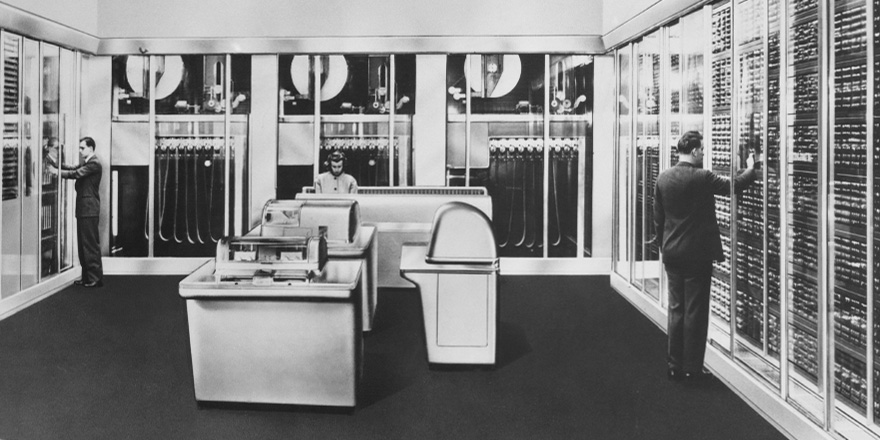The birth of the Internet
On August 30, 1969, the first building block of the Internet was born. Software AG has been there all along.

On August 30, 1969, the first building block of the Internet was born; a month later the first message was sent.
Imagine if the only way you could connect your computer to the Internet was through a device made by a single manufacturer. Plus, this device limits you to connecting four computers with a maximum data transmission rate of 50Kbps. And this device cost thousands of Euros. Would you bother?
I guess that the answer to that question depends on which year you’re living in. Today your home router probably came bundled free as part of your broadband contract, but 51 years ago you needed a Honeywell DDP-516 minicomputer.
Configured as an Interface Message Processor (IMP), the DDP-516 enabled your expensive mainframe to transmit data through the ARPANET. UCLA took delivery of their IMP on 30th August 1969, but they had to wait until October to start the connectivity revolution when the second IMP was commissioned at the Stanford Research Institute.
The historical importance of the IMP wasn’t ultimately in the long-obsolete hardware it used, but the impetus it gave to standardizing software messaging protocols – spawning the first Request for Comments (RFC 1) – “Host Software.” Without messaging standards like these implemented in software, today’s Internet would simply not exist.
Fast forward to 2020
Of course, businesses need to connect far more than computers today. By connecting a wide variety of sensors, companies can optimize manufacturing supply chains, the public water supply and energy consumption in real time. However, rather than a handful of computers, the need is to connect thousands – or even millions – of devices.
Documented protocols exist, of course, but there are tens, if not hundreds of them. The equivalent of an IMP is still needed to make sense of today’s Internet of Things – that is today’s industrial IoT platform.
A later evolution of the DDP-516, the H-316, was offered as a $10,000 “Kitchen Computer,” complete with recipes and a built-in chopping board. As its user interface needed a two-week programming course before you could make a start on cooking dinner, it’s perhaps unsurprising that none were sold.
Today, linking systems and sensors and applications together looks like child’s play compared with the IMP – integration platforms take care of the heavy lifting, and IoT platforms connect the sensors, collect the data and analyze it for actionable insights.
You can create an application to link sensors together in a bakery to keep employees safe during a pandemic faster than the first two IMPs could communicate. And all without the need for a two-week programming course.
Software AG has been there all along, providing the software that fluidly connects millions of lives around the world, with technology such as hybrid integration and the Industrial Internet of Things. We connect the world to keep it living and thriving.
Happy IMP Day!
See what you can do with the Internet of Things – and why so many projects fail – by clicking below.